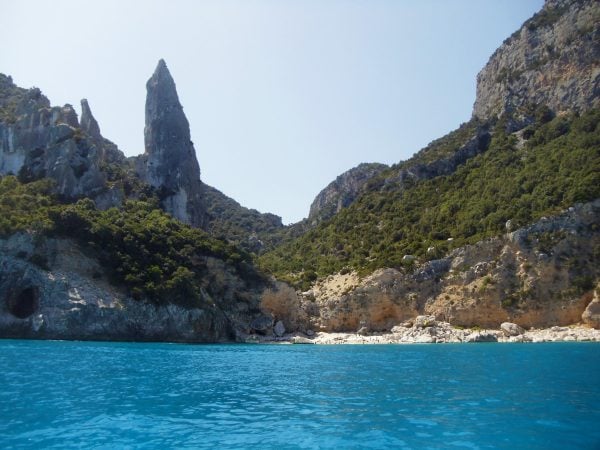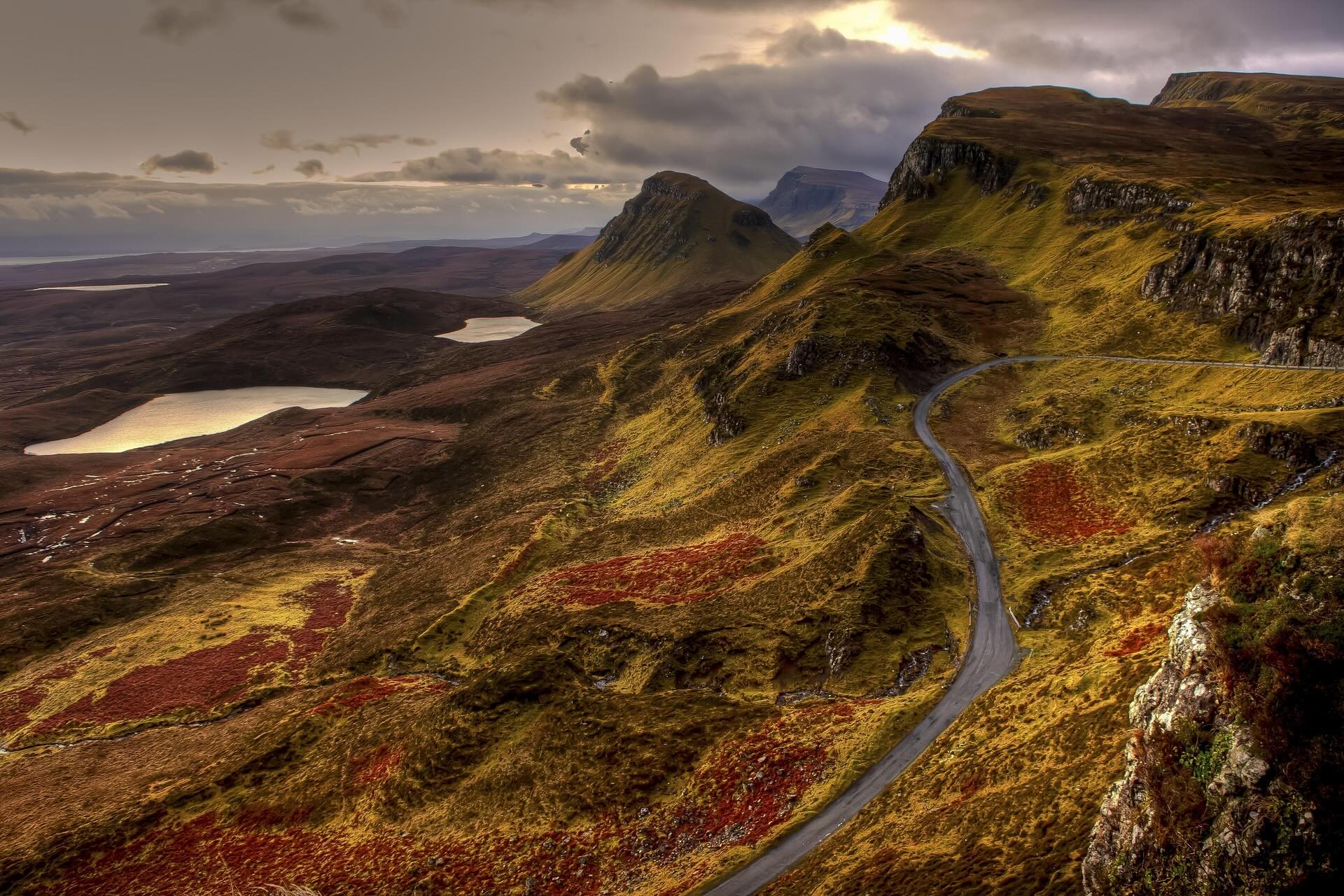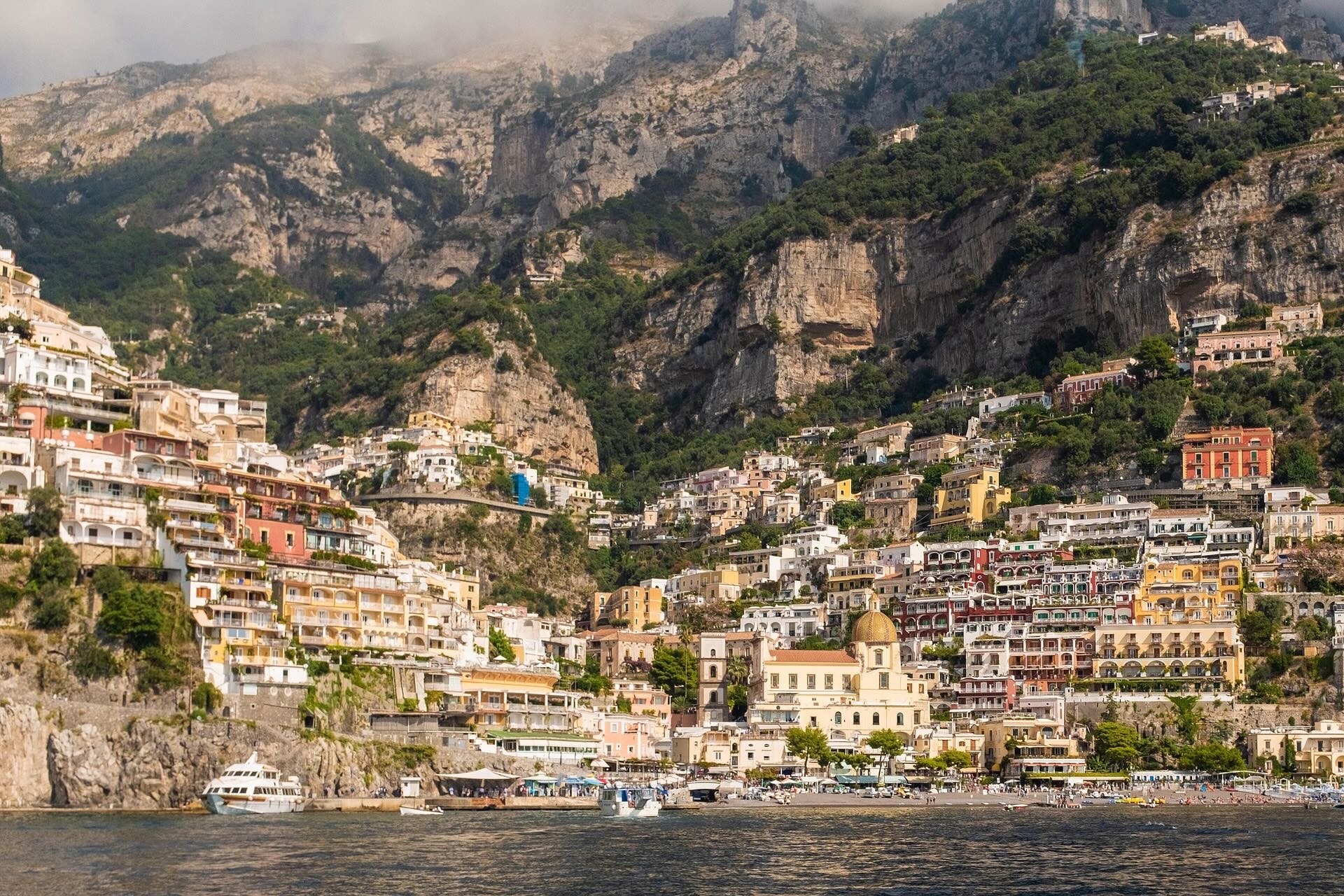5 Days In Rome
Day 4: Ancient Rome, Capitoline Hill & Monti
Day four of our 5 days in Rome itinerary will be mostly devoted to the area of the city known as Ancient Rome. We’ll start the day with a visit to the iconic Colosseum and Roman Forum before heading indoors to one of Rome’s finest museums. We’ll end the day with an optional detour to Rome’s “hipster” Monti district.
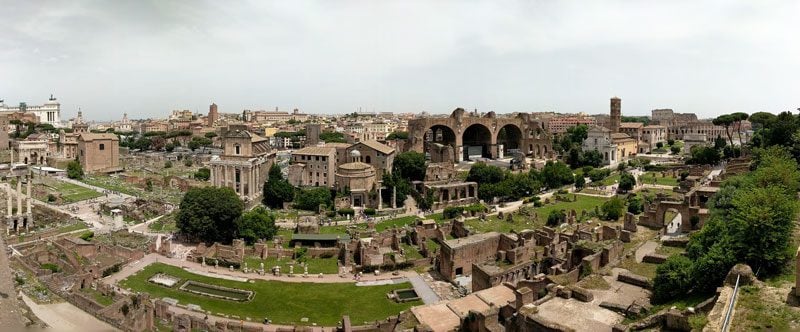
Background
Ancient Rome commonly references a period in history stretching from the founding of Rome in the 8th century BC until the collapse of the Western Roman Empire in the 5th century AD. This period can be further subdivided, but for simplicity, we’ll leave it at that. From a modest beginning in what is today the city of Rome, the Roman Empire vastly expanded during its height and included roughly 20% of the estimated world population at the time.
Preparing for your visit to Ancient Rome
Roman ruins are to be found all over the city. However, a large concentration of magnificent ruins are concentrated in the area we’re about to explore. That said, this is a day where you’ll need to use your imagination since, as preserved as some of the ruins may be, they are albeit still ruins, and can only serve as an indication to the Ancient Rome’s glorious past, much like in the ruined city of Pompeii on the Amalfi Coast.
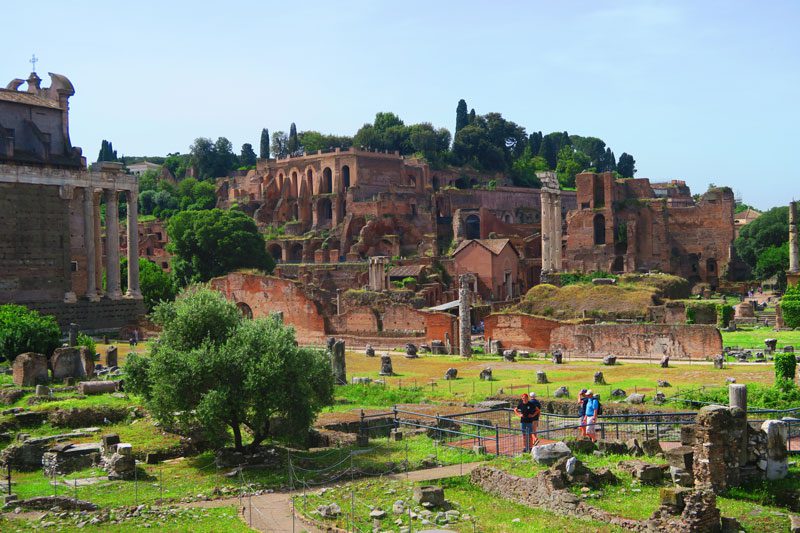
If you’re visiting Rome in the summer months, this will be a challenging day, especially if traveling with children. There’s a lot of walking to do, the crowds are at times unbearable, there’s hardly any shade in the Forum and you’ll constantly be approached in the public areas outside the monuments by an endless barrage of hawkers trying to sell you tickets, tours, water and souvenirs.
- Set the right expectations with everyone. This will be a challenging yet rewarding day
- What to pack: lots of water (large bottles are better since they can be refilled at fountains), sunscreen, hat, snacks, sandwiches, fruit and wear comfortable shoes and clothing.
- Purchase your tickets as far in advance as possible to avoid waiting in line and to ensure entry to the Colosseum at a designated time that suits you (you must select an exact time slot at the Colosseum).
- It’s best to book a combo ticket that includes entry to both the Colosseum and the Roman Forum. The ticket is valid for single entries over the course of two days so you can technically see the Colosseum on one day and the Forum on the following day.
- If archeology doesn’t top your wishlist, you can enjoy views of the Roman Forum from Via dei Fori Imperiali and the lookout on the Capitoline Hill (read further for more info).
- On extremely hot days, consider skipping the Forum as shade is hard to come by.
The Colosseum
After picking up some sandwiches from Ancient Pizzicheria Ruggeri and fruit from the Campo di Fiori market, we headed to the “most intense” sightseeing stop of the day at the Colosseum. The best way to approach the Colosseum is through Via dei Fori Imperiali. To your right is the Roman Forum and to your left is the Forum of Trajan.
It takes about 20 minutes to walk from Piazza Venezia to the Colosseum entrance and that’s where the “fun” begins. If you booked your Colosseum tickets in advance, you will need to choose a specific entry time to the Colosseum.
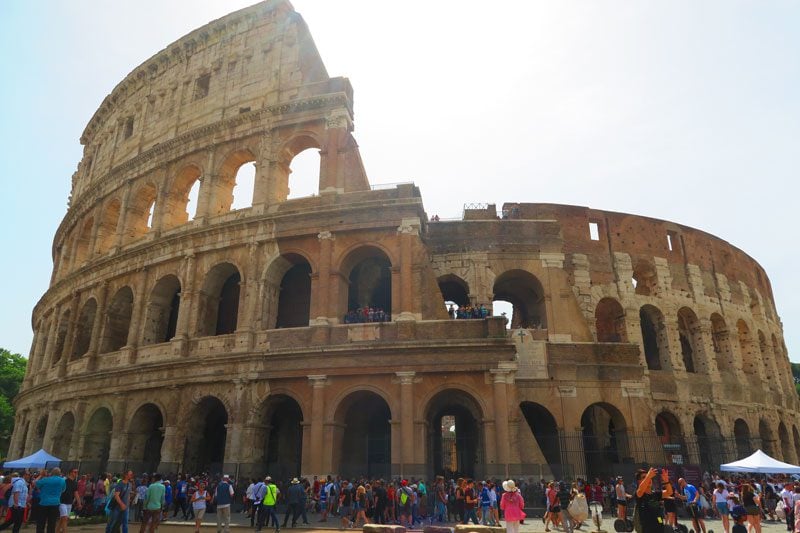
As you approach the entrance area, you will meet a sea of tourists, some trying to purchase tickets on the spot and most trying to find their designated queue (different tickets have different queues and lots of staff are there to help). In addition, you’ll constantly be approached by hawkers trying to sell you water, souvenirs and guided tours. There’s just no way to avoid this. About 15 minutes before your designated entrance time, you’ll enter your queue and go through security, after which you are free to explore the Colosseum.
There are several restricted areas that can be explored as part of a guided tour. At the time of booking, you will have the option to upgrade the regular entrance to include these.
The sheer scale of the Colosseum can only be appreciated from its interior, a massive stadium that stands the test of time (with lots of help) nearly 2,000 years after its construction. The stadium was used to stage gladiator battles, sometimes with ferocious animals thrown into the mix for an extra dose of fun. Archeologists are still peeling its layers and uncovering more secrets.

I recommend heading straight to the upper floor after you clear security and then walking around the lower floor before existing. The Colosseum also offers great views of the Arch of Constantine.
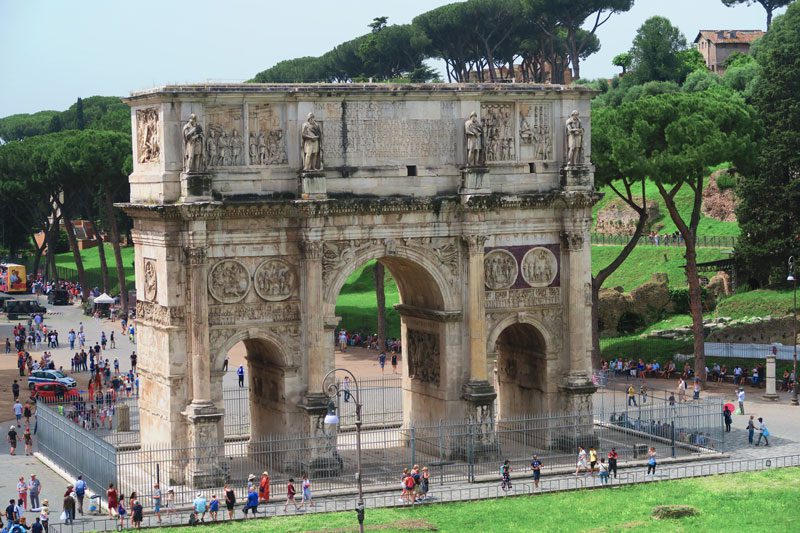
Basilica di Santa Francesca Romana
From the Colosseum entrance, there’s a narrow path that leads to the entrance of this incredible church that’s also known as Santa Maria Nova. It is said that both St Peter and St Paul prayed at this very spot. There’s been a church here since the 10th century but, over the years, new sections were added such as the bell tower.
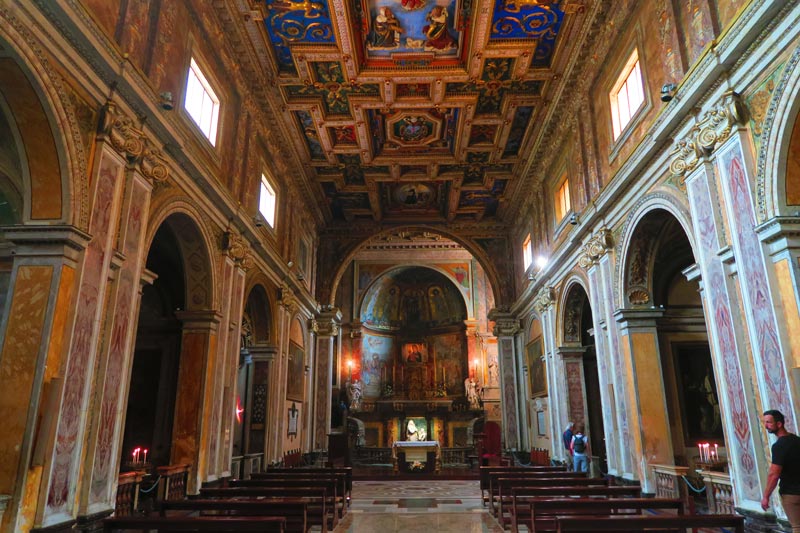
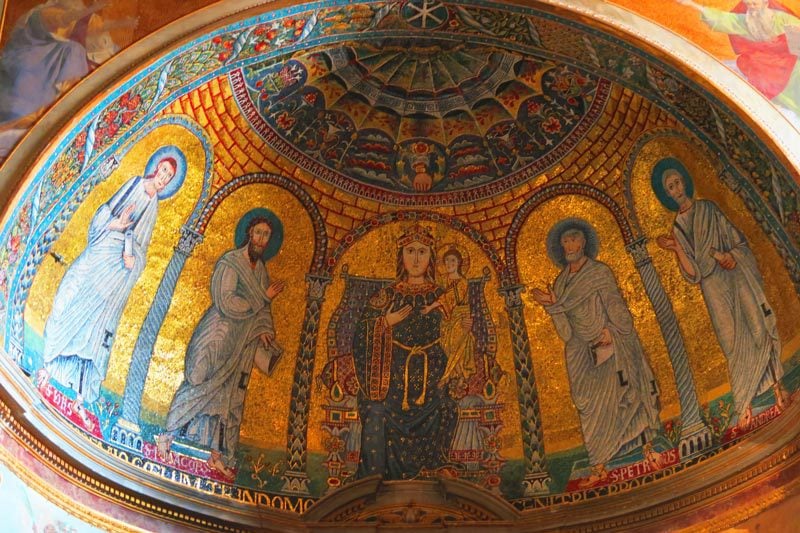
Apart from its exquisitely ornamented ceiling, the church is famous for its mosaics and crypt. Visiting the church is also a good idea if you need some shade and cooling off between the Colosseum and Roman Forum.
The Forum and Palatine Hill
Before entering the Forum, we needed a break and some food (we ate all our sandwiches pretty early in the day) so we headed to some tourist cafe on the hill overlooking the Colosseum (Via Nicola Salvi). There are a number of options here, some fancier than others.
Built on a small patch of low-lying grassy wetland between the Capitoline and Palatine hills, the Roman Forum was essentially the “downtown” of Ancient Rome. After the site was properly drained, the Forum took shape and became the seat of its political and religious institutions, until relocation to the Imperial Forums when the site could no longer meet the needs of the growing empire.
Consequently, the Forum lost its luster and regression to its present state was accelerated by a great fire, the rise of Christianity and barbarian invasions. It was only in the 19th century that archaeologists began to unearth what we see today. Visitors to the Roman Forum must use their imagination to picture its former glorious state but, simply taking into account its age, a visit to the Forum is a must in my opinion.
If you’re visiting the Forum after the Colosseum, you’ll be clearing security and entering via the Arch of Titus which commemorates the Roman victory in the Holy Land over the Kingdom of Judea.

I then recommend veering left and climbing to Palatine Hill, a much quieter section in the massive complex. There’s a modest museum here and lots of green space to rest amidst the ruins. You can technically also head down to Circus Maximus if you want but there isn’t much to see there besides its massive oval shape.
The real excuse for visiting Palatine Hill is the terrace in its gardens, offering unprecedented views of the Forum and Colosseum. This is the money shot!
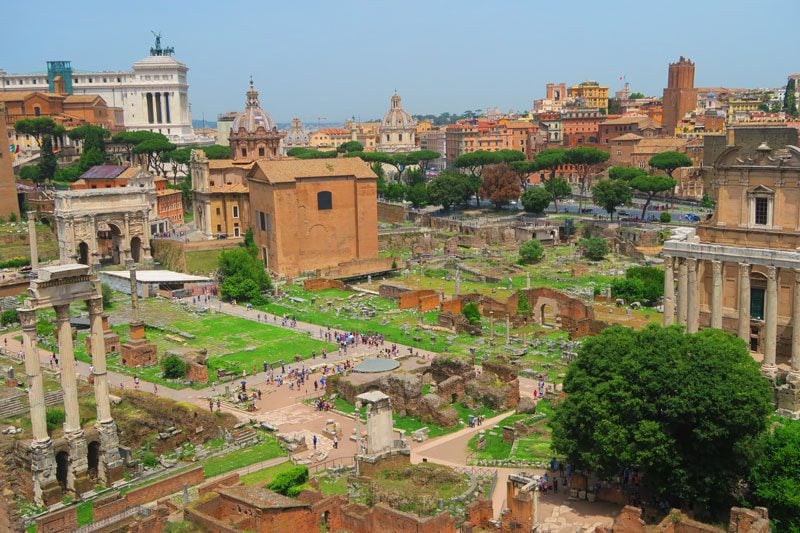

Back in the Arch of Titus, you are now free to explore the Forum. The best way is to simply stroll along Via Sacra – the “main street” – and veer right or left whenever you see something of interest. The mix of fallen columns, Roman scriptures on marble slabs and structures still barely standing after thousands of years, make for an impressive visit. I won’t get into all the Roman Forum highlights, but there are lots of them. If you are keen on exploring the fine details of the Forum, here’s a good resource.

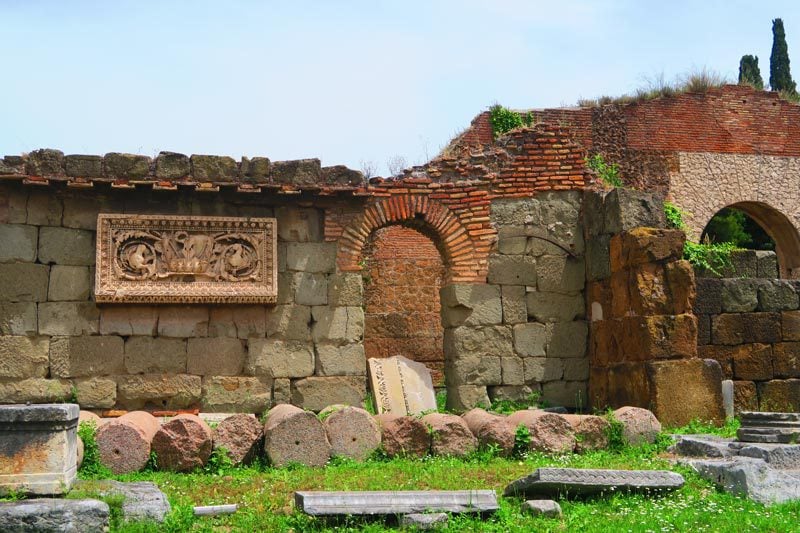

Inquire with staff about the location of exits in operation during your visit and plan accordingly with your next stop after the Forum.
Vittorio Emanuele II
We exited through the Via della Salara Vecchia exit and continued to Piazza Venezia. Visible from just about every panoramic lookout in Rome, the Vittoriano monument dominates the large traffic circle and makes for an interesting quick stop (also known as the Altar of the Fatherland). The immense marble monument was erected at the end of the 19th century to commemorate the reunification of Italy and is topped by one of the world’s largest statues depicting King Vittorio Emanuele II on horseback.
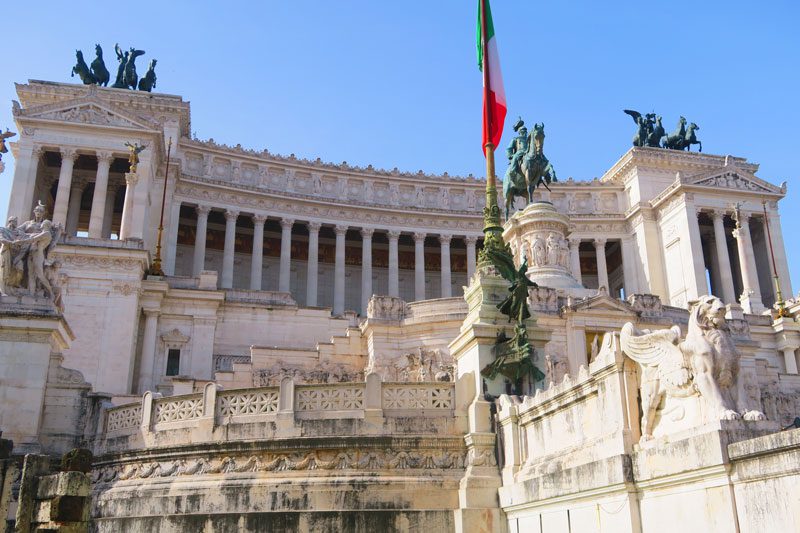
You can now enter the monument and explore its various free sites such as the Tomb of the Unknown Soldier and panoramic terrace, and for an extra fee take an elevator to its rooftop and visit a museum.
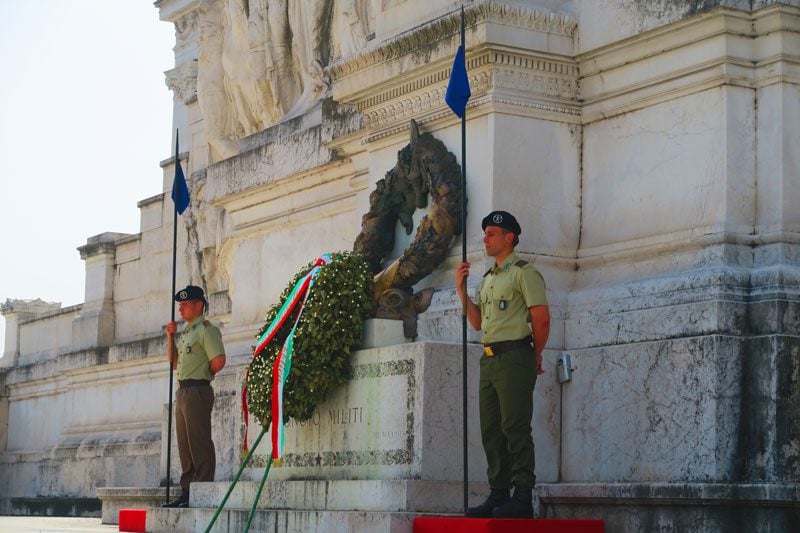
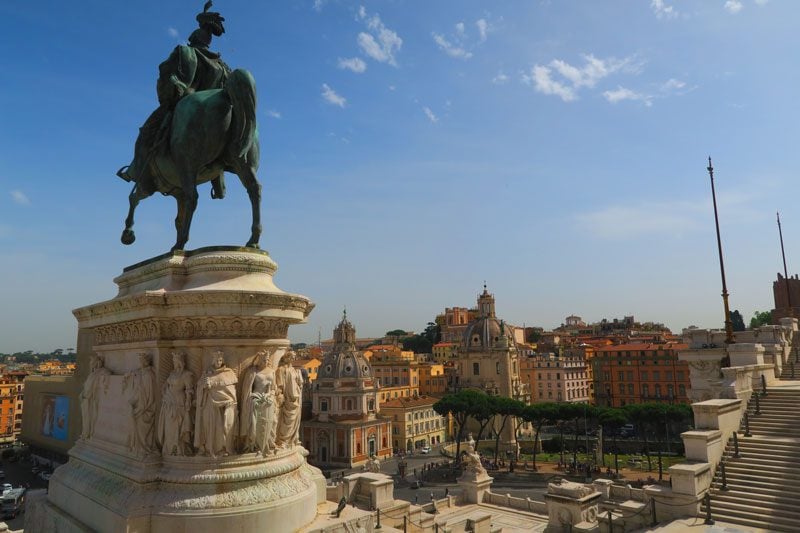
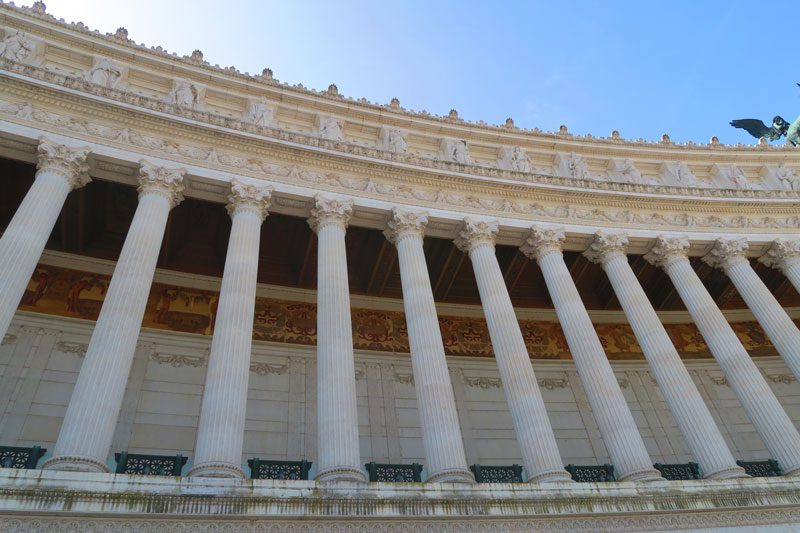
Basilica di Santa Maria in Aracoeli
Erected at the top of the Capitoline Hill on the site of a former pagan temple honoring Jupiter, this basilica is one of the finest churches in Rome. To get here, you’ll need to climb a steep staircase but the effort is well worth it. Before entering the ancient basilica, be sure to look back and spot the Marcello Theatre.
The interior of the basilica is simply out of this world, more like a museum than a place of worship. Signs of the basilica’s age of nearly 1,000 years are absolutely evident and its countless ornaments, sculptures and inscriptions can easily “kill” a good thirty minutes.
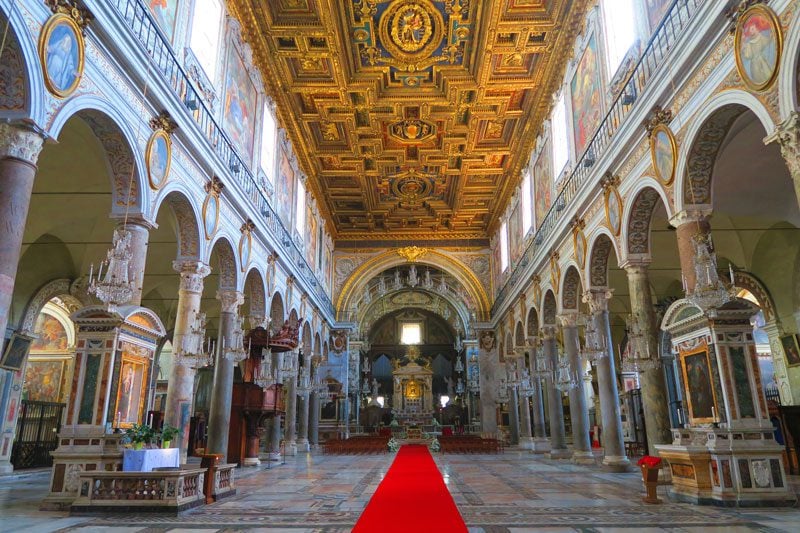
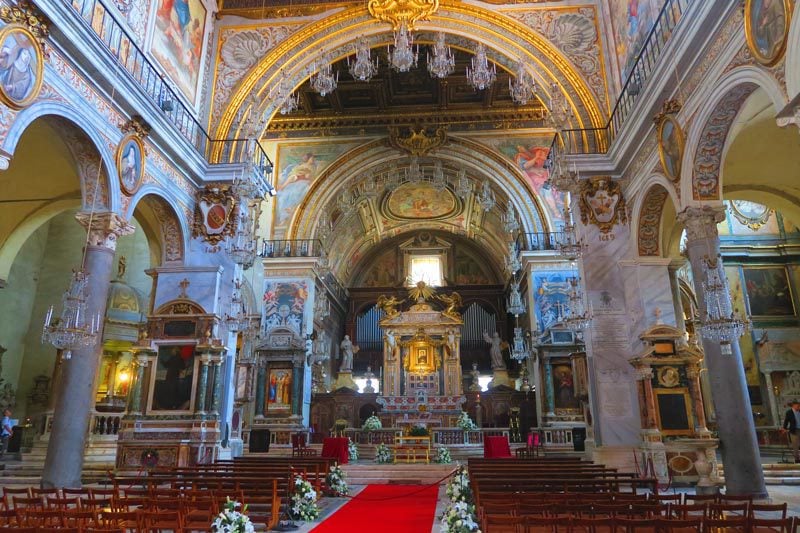
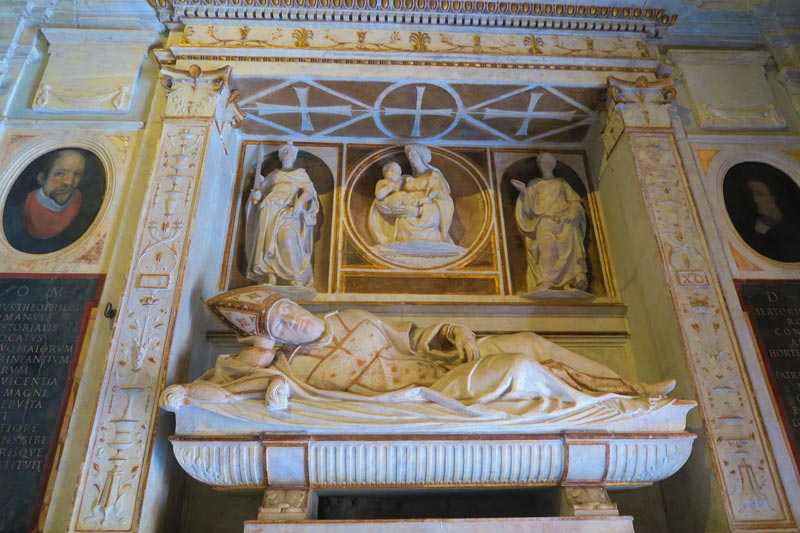
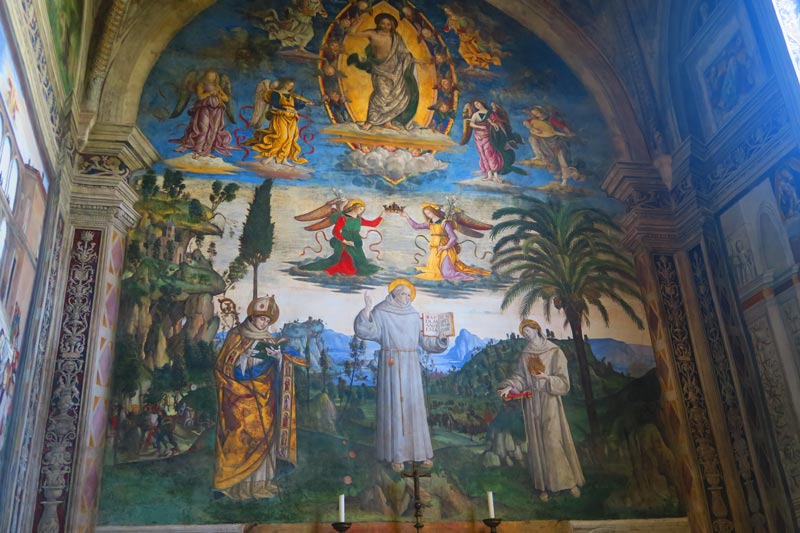
Capitoline Museums
The elegant staircase known as Cordonata Capitolina leads to Michaelangelo’s perfectly proportioned Piazza del Campidoglio and the entrance to the Capitoline Museums which rank high on the list of best museums on Rome. The Capitoline Hill was a strategic seat of power in ancient times and it is from its name that the word “capital” came to be.

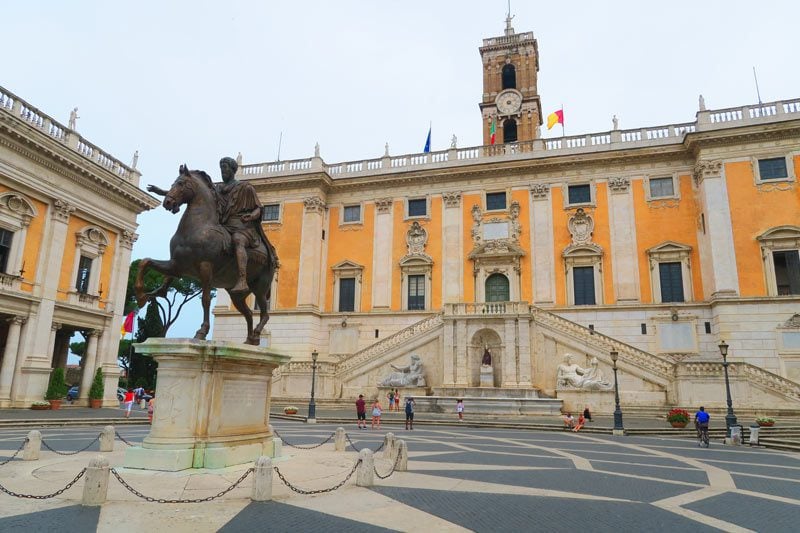
The main reason for climbing the hill is to visit the Capitoline Museums and their fine collection of sculptures and paintings. It’s not a must to purchase tickets in advance but if your visit coincides with the arrival of multiple groups, there could be a queue. Also, note that you will need to leave your backpack in a small locker before entering (free).
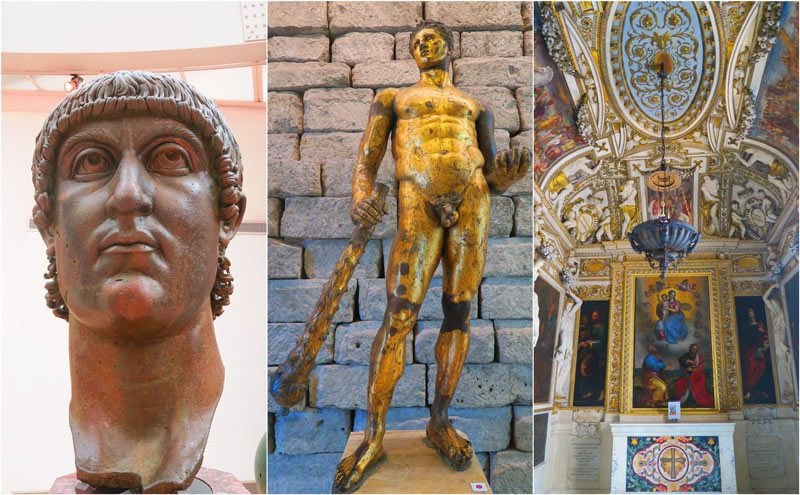
The museum is split into two separate buildings: the Palazzo Nuovo and the Palazzo dei Conservatori. We chose to focus our short visit on the Palazzo dei Conservatori where the top highlights reside, including the masterpiece bronze statue known as “She Wolf” which has become the symbol of Rome, fragments of what are thought to be sections in a massive statue of Emperor Constantine, paintings, exquisitely sculpted sarcophagi and more.
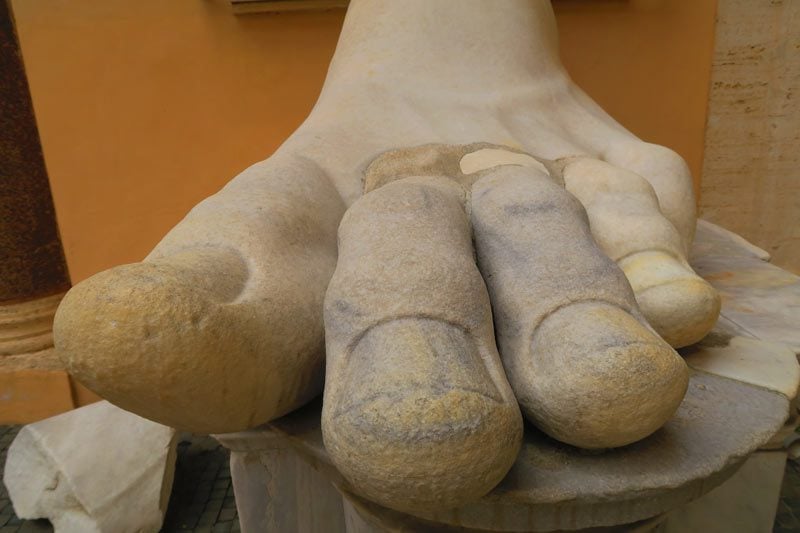
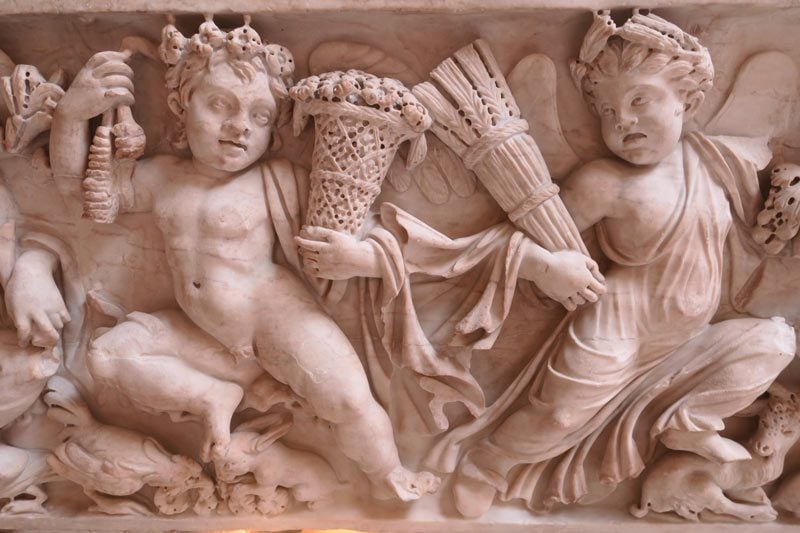

Panoramic Lookout
Another reason for climbing to Capitoline Hill, especially if you won’t be visiting the Roman Forum, is the panoramic lookout at the intersection of Via Monte Tarpeo and Via del Campidoglio. Totally worth it!

Bonus: Walk to Monti
Still have some gas left in the tank? Continue the day by walking to the trendy Monti district which takes about 15 minutes on foot from the Capitoline Museums. Monti can also serve as a dinner & drinks destination if you feel the need to head back for a rest after the museum visit.
The most vibrant area in Monti is the small perimeter created by Piazza della Madonna dei Monti and Via Panisperna meeting the parallel streets of Via dei Serpenti and Via del Boschetto. After a long day of sightseeing, treat yourself to some ice cream at Il Gelatone Roma or a glass of wine at Astemio on Via Cavour. Both places rank high on my personal list of the best places to eat and drink in Rome.

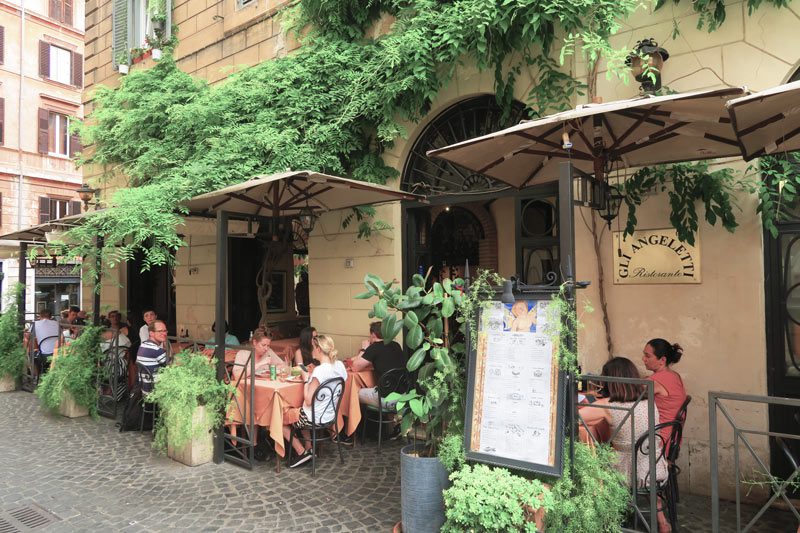
Santa Maria Maggiore
Completed in the 18th century but dating back to the 4th century, this basilica is one of the largest and most impressive churches in Rome. It is also a key place of worship so security must be cleared before entry. Inside, you’ll be amazed at its spacious interior, artwork and collection of key figures to whom the basilica serves as their final resting spot, including former popes.


Perhaps the most impressive of the basilica’s treasures is its very own Sistine Chapel, highlighted by a bronze Baldacchino carried by four angels.
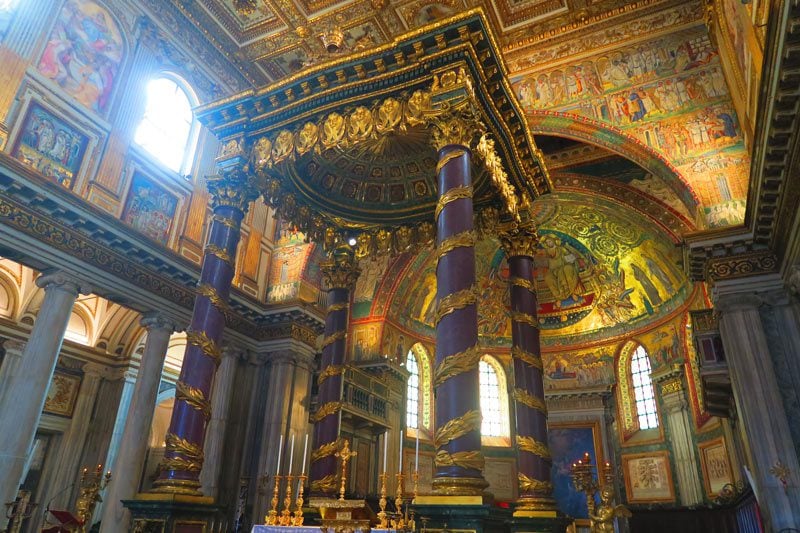
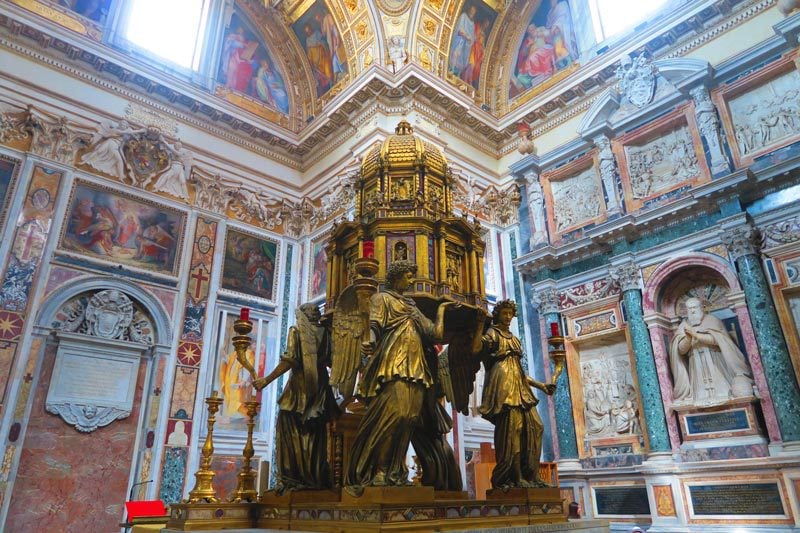
From the Maggiore, you can head to Rome’s Central Market (Mercato Centrale). You’ll find there are plenty of dining options in addition to the “usual” market produce.
Dinner in Trastevere
For dinner, we walked back to Trastevere and dined in the outdoor terrace of La Scala in Trastevere. We made reservations in the morning and did not regret our decision. La Scala is romantically located in a lovely piazza at the heart of Trastevere and uses truffles in many of its signature dishes.
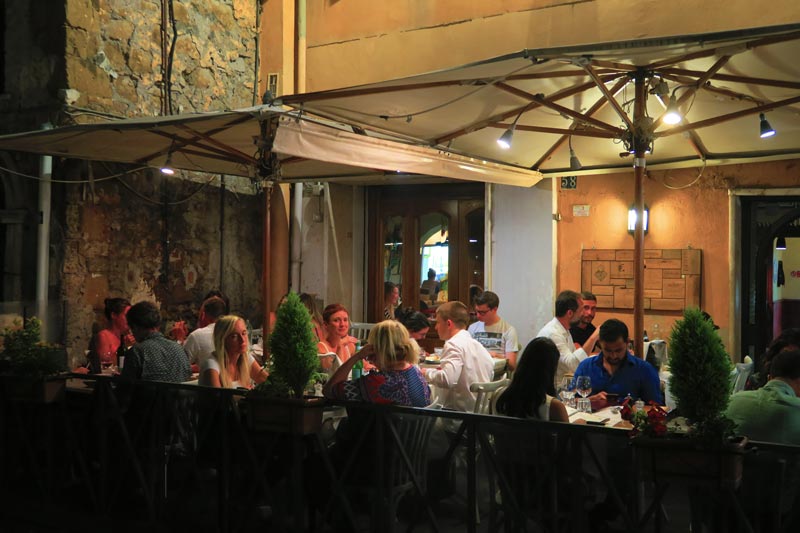
We started with some bruschettas with truffles, then continued to a beef dish… with truffles and arguably the best pasta we sampled in Rome (Roman-style pasta with tuna, cherry tomatoes and capers). The food was incredibly delicious and very well priced.

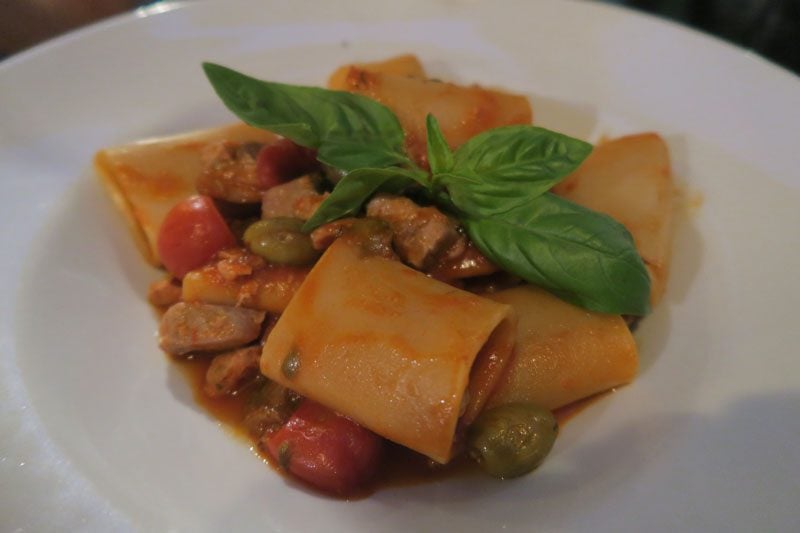
Additional recommended Trastevere restaurants for dinner include Nannarella, Trattoria Da Enzo al 29, Osteria da Zi Umberto, and Tonnarello. You can also stay in Monti if you’re already there and have dinner at Trattoria Vecchia Roma (see tomorrow’s dinner for more info).
